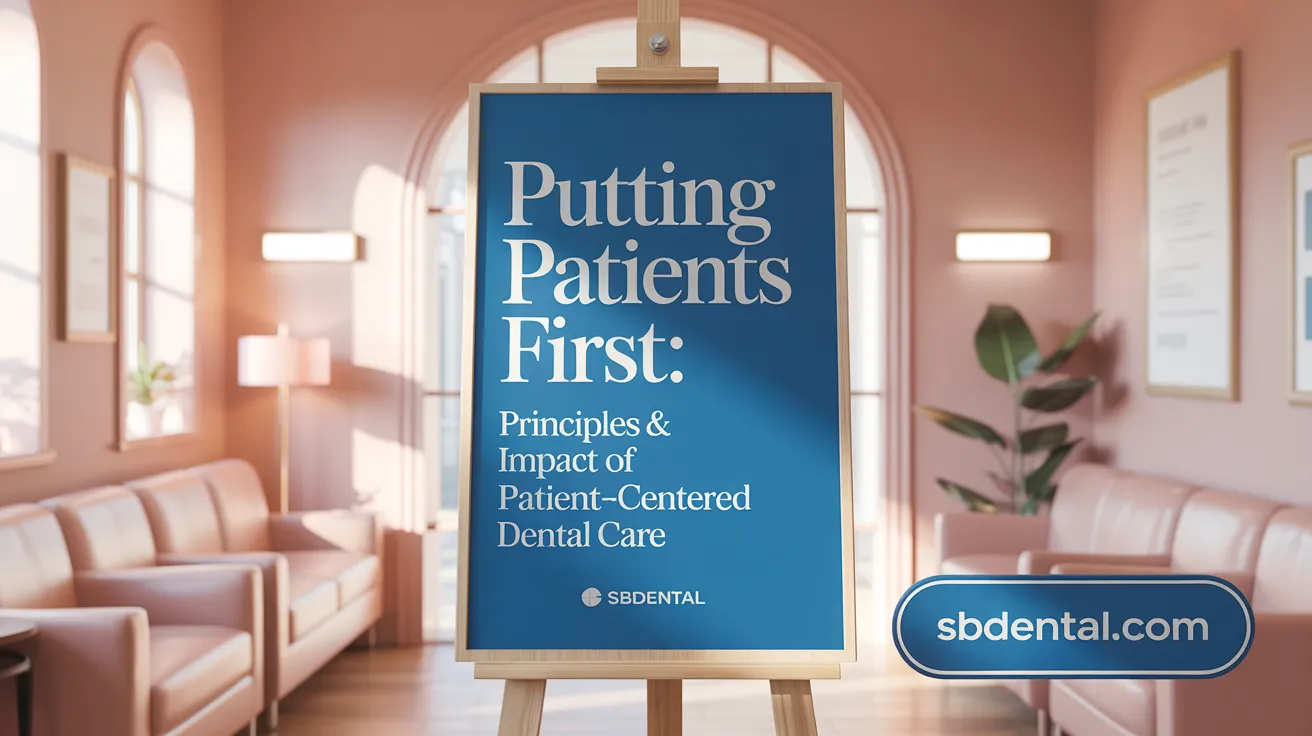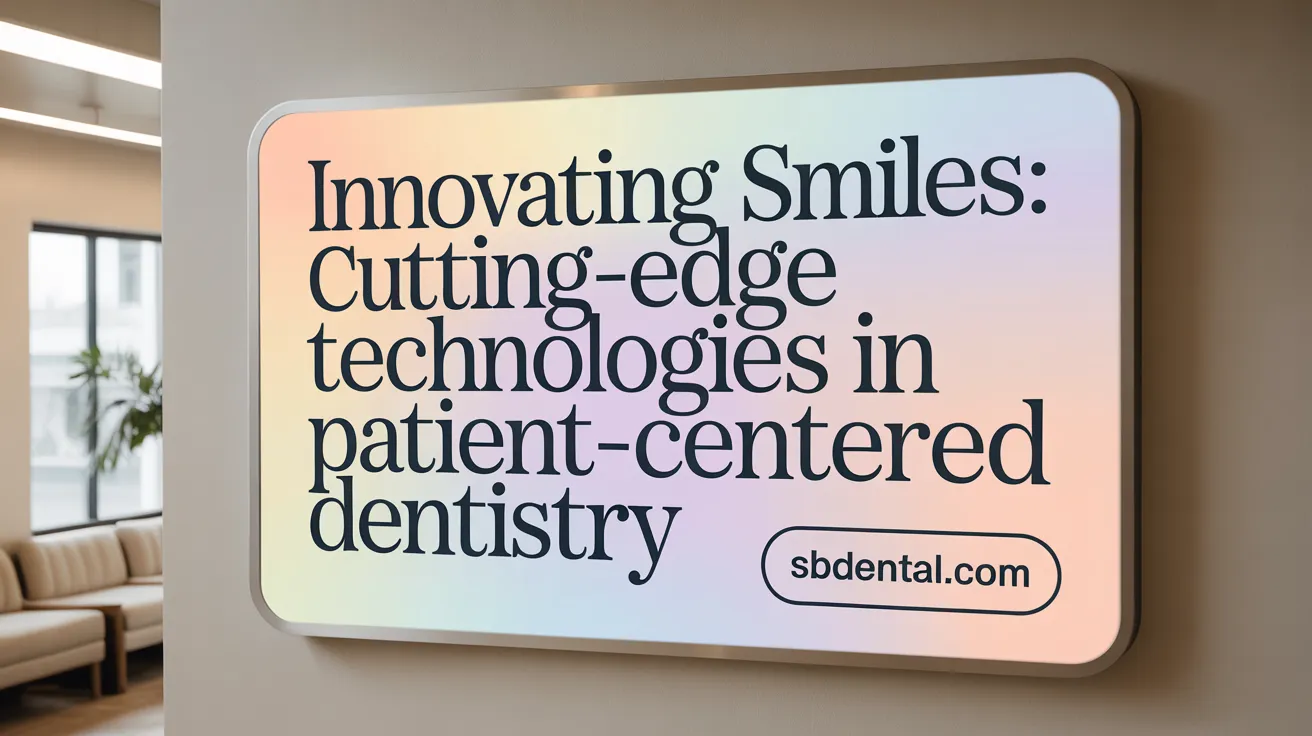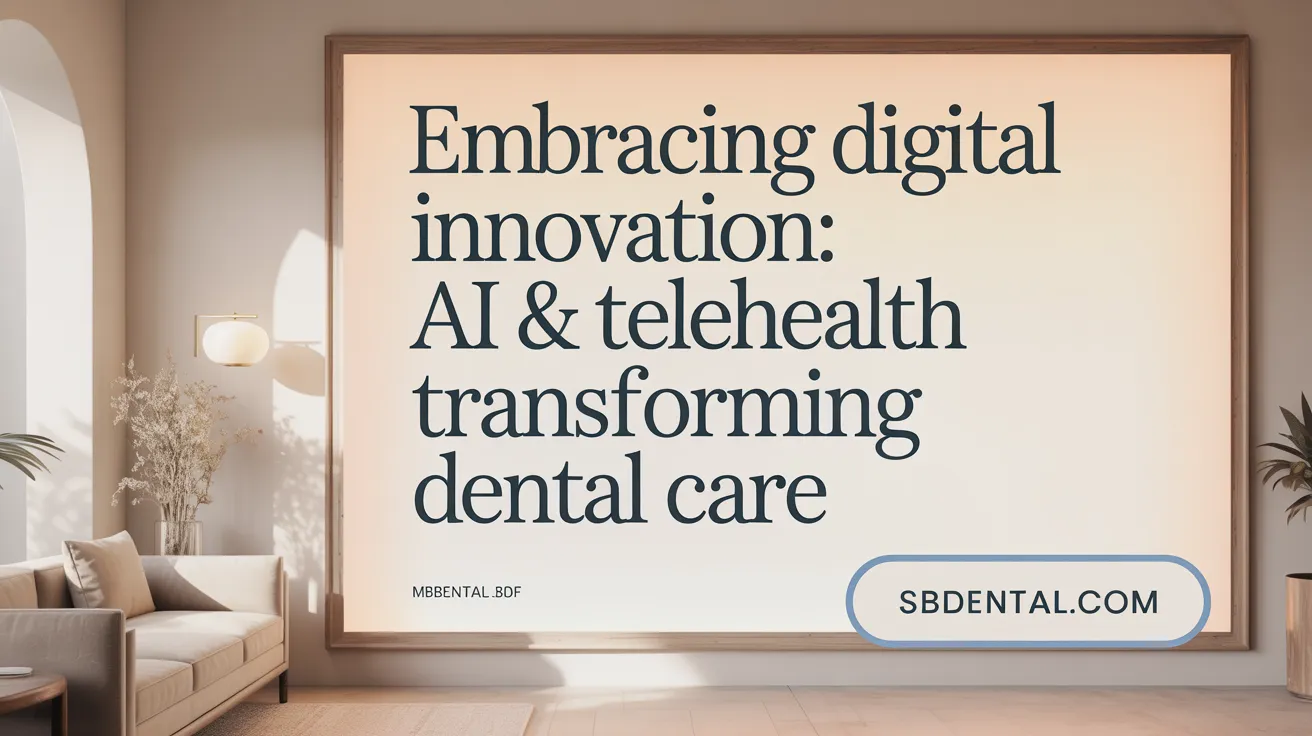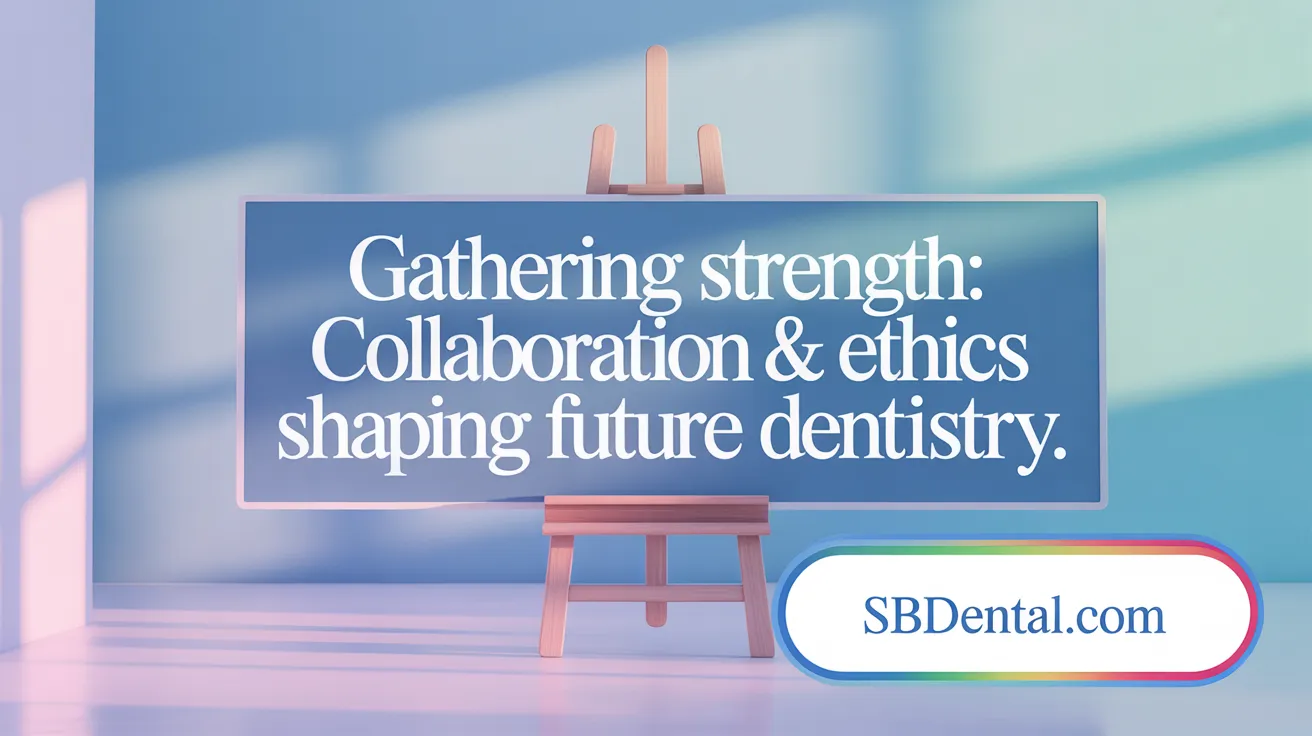Understanding Patient-Centered Care in Modern Dentistry
Patient-centered care (PCC) is reshaping the landscape of dentistry by placing patients' unique needs, values, and preferences at the core of treatment decisions. This holistic approach not only fosters stronger dentist-patient relationships but also integrates advanced technologies and interdisciplinary collaboration to enhance overall health outcomes. As dentistry evolves, embracing patient-centered principles and innovations ensures more personalized, accessible, and effective oral health care for diverse patient populations.
Principles and Significance of Patient-Centered Care in Dentistry

What are the principles and importance of patient-centered care in dentistry?
Patient-centered care (PCC) in dentistry is a comprehensive approach that focuses on respecting and understanding each individual's unique needs, preferences, and values. Its primary goal is to guide all clinical decisions in a way that aligns with what matters most to the patient. This approach encourages effective communication, empathy, and building strong relationships between patients and dental professionals.
Fundamentally, PCC involves engaging patients actively in their care, ensuring they are informed and involved in every step of decision-making. It also addresses psychosocial factors, including emotional support, social circumstances, and overall well-being. For instance, dentists using PCC will explain current oral health issues, discuss potential solutions, and listen to concerns, allowing patients to co-discover the best treatment options.
Implementing patient-centered care has significant benefits. It leads to better health outcomes, as treatments are more tailored and aligned with patient needs. Patients tend to be more satisfied, adhere better to treatment plans, and experience less dental anxiety. Additionally, PCC promotes preventive care by educating and empowering patients to maintain their oral health, which can reduce the need for invasive procedures later.
Despite its advantages, integrating PCC into dentistry faces challenges. Many dental professionals have limited formal training in patient-centered approaches, and there is a lack of standardized guidelines for its practice. The ongoing effort involves embedding these principles into dental education and clinical workflows to foster a more holistic, respectful, and collaborative era of oral healthcare.
Contrasting Patient-Centered Care with Traditional Dental Practices
How does patient-centered care differ from traditional dental practices?
Patient-centered care in dentistry marks a significant shift from traditional approaches by prioritizing the entire well-being of the patient rather than just addressing specific dental issues. Unlike conventional dentistry, which often focuses on fixing individual problems with standard procedures and materials, person-centered care emphasizes understanding each patient's unique needs, preferences, and social circumstances.
In practical terms, this approach involves engaging patients in shared decision-making, explaining potential problems and treatment options comprehensively, and involving them actively in their own care. It values open, empathetic communication and considers behavioral, emotional, and psychological factors that influence oral health.
Furthermore, patient-centered practices integrate oral health into overall systemic health management. This multi-disciplinary, holistic approach recognizes the link between oral diseases and systemic conditions such as cardiovascular disease and diabetes, aiming to improve overall health outcomes.
Overall, this model fosters a collaborative environment where care is personalized, preventive, and supportive, enhancing patient satisfaction, adherence, and well-being.
Additional insights on patient-centered dental care
| Aspect | Traditional Practice | Patient-Centered Approach | Additional Details |
|---|---|---|---|
| Focus | Fixing immediate problems | Overall well-being and health | Emphasizes prevention and holistic health |
| Patient Role | Passive recipient | Active participant | Includes shared decision-making |
| Communication | Limited explanation | Full transparency and empathy | Encourages questions and education |
| Interdisciplinary** | Rarely involved | Integrated with primary care and other health professionals | Supports systemic health awareness |
Search query for more information
- Differences between patient-centered dentistry and traditional dental care
This innovative approach aims to transform dental care into a supportive, personalized experience fostering trust and long-term health.
Word count: 180
Technological Innovations Shaping the Future of Patient-Centered Dentistry

What future trends, innovations, and technological advancements are shaping patient-centered dentistry?
The future of dental care is set to be transformed by a range of innovative digital and technological developments. These advancements are focused on making treatments more personalized, efficient, and comfortable for patients.
One major trend is the use of AI-driven diagnostics and treatment planning tools. These systems analyze dental images, such as radiographs and intraoral scans, to detect oral health issues early and with greater accuracy. AI algorithms also assist in creating tailored treatment plans based on individual patient data, which enhances outcomes and optimizes the delivery of care.
Alongside AI, imaging and printing technologies are revolutionizing restorative and surgical procedures. 3D imaging and CAD/CAM (Computer-Aided Design and Manufacturing) software enable precise design of restorations like crowns and bridges, which can be fabricated rapidly using 3D printers. These tools help produce highly accurate, customized dental prosthetics in less time, improving patient comfort and success rates.
Tele-dentistry and remote consultations are increasingly integral to accessible dental care. These platforms leverage high-quality digital imaging, AI analysis, and secure communication technologies to diagnose and plan treatments without requiring in-office visits. This is particularly beneficial for underserved populations or patients with mobility issues, broadening the reach of quality dental services.
Minimally invasive procedures are becoming standard as laser dentistry and advanced imaging techniques allow for less tissue damage, reduced discomfort, and quicker healing. Laser tools facilitate cavity removal, gum treatment, and other interventions with precision, enhancing patient experience.
Regenerative medicine and nanotechnology are also shaping the future. Stem cell therapies and tissue engineering aim to restore damaged oral tissues and even grow new teeth. Meanwhile, nanotechnology enables targeted drug delivery within the mouth, improving the efficiency of treatments and reducing side effects.
Finally, the use of advanced anesthesia techniques, digital tools, and smart devices ensures safer, more comfortable clinical experiences. Incorporating biofeedback, sedation, and pain management innovations reduces anxiety and enhances overall patient care.
In summary, these technological trends—ranging from AI diagnostics to regenerative materials—are making dental treatments more personalized, minimally invasive, and accessible. As regulation and privacy standards evolve, these tools will continue to refine the patient-centered approach, ensuring better health outcomes and more engaging dental experiences.
The Rise of Artificial Intelligence and Telehealth in Dental Care

How are artificial intelligence and telehealth influencing the future of dental care?
Artificial intelligence (AI) and telehealth are rapidly changing the landscape of dental care by making it more accessible, precise, and personalized. AI-powered tools help in diagnosing issues like cavities, gum disease, and oral cancer with high accuracy, often matching or outperforming traditional methods. These technologies analyze dental images such as X-rays and scans, facilitating early detection and better treatment planning.
Telehealth in dentistry, known as teledentistry, broadens access to care by enabling remote consultations. Patients in underserved or rural areas can connect with dental professionals without needing to travel, improving preventive care and early intervention.
AI also supports patient engagement and education. Virtual assistants, chatbots, and personalized content provide patients with tailored information about oral health, boosting their understanding and compliance. Interactive tools, including virtual reality simulations, help in explaining procedures and fostering trust.
Remote monitoring is another critical aspect, where wearable devices and smart sensors track oral health indicators over time. Combining this data with AI analytics allows for predictive insights and personalized treatment adjustments, supporting care continuity.
Despite the promising developments, challenges such as data privacy and ethical concerns persist. Ensuring patient information security and establishing clear standards for AI use are vital for responsible integration.
Looking ahead, innovations like 5G connectivity, virtual reality, blockchain technology for secure data sharing, and advanced robotic surgery are set to further revolutionize dental care. These advancements promise faster, safer, and more engaging patient experiences.
In summary, AI and telehealth are making dental care more precise, accessible, and patient-centered. They enable earlier detection, personalized treatments, and improved access—particularly benefiting underserved populations—while also requiring careful management of privacy and ethical issues.
Interdisciplinary Collaboration and Ethical Challenges in Patient-Centered Dentistry

What interdisciplinary approaches are being employed to integrate oral health into primary care?
Integrating oral health into primary care involves several innovative approaches that foster collaboration among healthcare professionals. Interprofessional education programs teach medical and dental students to work together from the start, emphasizing teamwork and comprehensive patient care. Collaborative practice models, such as co-locating dental professionals within primary care clinics, help facilitate on-site consultations and joint treatment planning.
Shared electronic health records (EHRs) with dental modules enable seamless communication and data sharing between medical and dental providers. Telehealth services extend the reach of dental care, especially in underserved areas, allowing remote consultations and follow-up care.
Public-private partnerships and community-based programs, like the Community Dental Health Coordinator (CDHC), aim to expand access and focus on preventive care. Policy reforms and funding adjustments support integrated care, while efforts to improve interoperability between health systems aim to reduce systemic barriers. Overall, these strategies aim to recognize oral health as an essential component of overall health, fostering a more holistic, patient-centered healthcare system.
What are some ethical considerations and challenges associated with advancements in patient-centered dentistry?
Advances in patient-centered dentistry, especially involving AI and digital tools, raise important ethical questions. Protecting patient privacy and ensuring data security are paramount, as digital information is vulnerable to breaches. Transparent, informed consent processes must clearly explain how data will be used, addressing patients’ rights to control their information.
Equitable access is another concern, as technological advancements risk widening disparities if vulnerable populations cannot afford or access new services. Dentists must uphold fundamental ethics such as autonomy—respecting patients’ choices—and beneficence—acting in patients' best interests—while avoiding harm and ensuring fairness.
Reliance on AI tools demands rigorous validation to minimize bias and errors, and maintaining human oversight is necessary to preserve the personal, empathetic aspect of dental care. Ethical practice also requires continuous education of professionals and strict adherence to regulations to foster trustworthy innovation._Striking a balance between technological progress and ethical obligations is essential to ensure safe, equitable, and human-centered dental care.
Which research findings, expert opinions, and initiatives support and promote a patient-centered approach in dentistry?
Research consistently shows that patient-centered care improves treatment adherence, satisfaction, and health outcomes. Studies have highlighted how addressing patients’ preferences and involving them in decisions leads to better understanding and management of oral health issues.
Expert opinions stress that communication skills, empathy, and behavioral sciences should be integral parts of dental education. Interprofessional collaboration and holistic care—considering social, behavioral, and lifestyle factors—are vital for comprehensive treatment.
Various initiatives promote these principles, including policy reforms and community outreach programs like 'Give Kids A Smile' and national awareness campaigns that focus on prevention and early detection of systemic diseases linked to oral health.
Professional organizations, such as the American Dental Association (ADA), advocate for integrated, preventive, and equitable care models. These programs work to foster environments where patients feel empowered and engaged, guiding the evolution of dentistry toward a more inclusive, health-oriented practice.
Embracing a Patient-Centered Future in Dentistry
The future of dentistry lies in embedding patient-centered care deeply within all aspects of the profession—from education and clinical practice to technological innovation and health system integration. By valuing individualized care, fostering multidisciplinary collaboration, and responsibly embracing emerging technologies like AI and telehealth, dental professionals can dramatically improve patient experiences and outcomes. Addressing ethical considerations and ensuring equitable access will remain paramount as the field evolves. Ultimately, this patient-focused transformation promises to not only enhance oral health but also contribute significantly to overall well-being and health equity worldwide.
References
- Patient-Centered Care is the Future of Dentistry
- A Patient-Centered Perspectives and Future Directions in ...
- Redefining Dentistry in Primary Care a Must
- The Future of Dentistry: Digital Innovation, Oral Health, and ...
- The Future Of Dentistry: Predicting What's Next For Dental ...
- The Future of Interdisciplinary Education in Dentistry
- Patient-Centered Care: Trends Transforming the Dental ...
- What is patient-centered care, and how it's beneficial for ...
- The future of dentistry: Innovations and trends shaping ...
